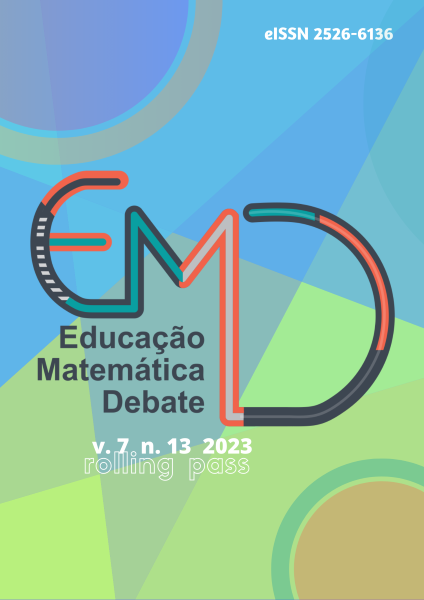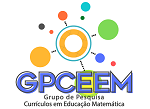Study of GeoGebra Plane and Spatial Geometry by students with high abilities in the early years of Elementary School
DOI:
https://doi.org/10.46551/emd.v7n13a17Keywords:
Geometric Solids, Flat Figures, GeoGebra, TechnologyAbstract
This qualitative and interpretative work investigates the relationship established between Plane Geometry and Spatial Geometry by Elementary School children with High Abilities through manipulation of an animated scenario in GeoGebra. Analyzes are based on written records and audio recordings of three children when working with the animated scenario Encaixe das figuras geométricas, through which BNCC skills manifested by these children were identified. It was identified that animated scenario Encaixe das figuras geométricas contributed to perception, recognition, movement and differentiation between geometric solids and flat figures, and that it does not depend on the student’s age to work with animated scenarios in GeoGebra.
Downloads
References
ANTUNES, Celso. Jogos para a estimulação das múltiplas inteligências. Petrópolis: Vozes, 1998.
ARMSTRONG, Thomas. Inteligências múltiplas na sala de aula. Tradução de Maria Adriana Veríssimo Veronese. 2. ed., Porto Alegre: Artmed, 2001.
BRASIL. Ministério da Educação. Secretaria de Educação Básica. Base Nacional Comum Curricular: Educação Infantil e Ensino Fundamental. Brasília: MEC/SEB, 2017.
FLEITH, Denise de Souza. Criatividade e altas habilidades/superdotação. Educação Especial, Santa Maria, n. 28, p. 219-232, 2006.
GAMA. Maria Clara Sodré Salgado. As teorias de Gardner e de Sternberg na educação de superdotados. Educação Especial, Santa Maria, v. 27, n. 50, p. 665-674, set./dez. 2014.
GARDNER, Howard. Estruturas da mente: a teoria das inteligência múltiplas. Tradução de Sandra Costa. Porto Alegre: Artes Médicas, 1994.
GARDNER, Howard. Inteligência: um conceito reformulado. Tradução de Adalgisa Campos da Silva. Rio de Janeiro: Objetiva, 2000.
MARTINS, Bárbara Amaral. Alunos precoces com indicadores de altas habilidades/superdotação no Ensino Fundamental: identificação e situações (des)favorecedoras em sala de aula. 2013. 139f. Dissertação (Mestrado em Educação) — Faculdade de Filosofia e Ciências. Universidade Estadual Paulista. Marília.
MOSQUERA, Juan José Mouriño, STOBÄUS, Claus Dieter, FREITAS, Soraia Napoleão. Altas habilidades/superdotação: abordagem ao longo da vida. Educação Especial, Santa Maria, v. 26, n. 46, p. 401-420, maio/ago. 2013.
RAMOS-FORD, Valerie; GARDNER, Howard. Giftedness from a multiple intelligence perspective. In: COLANGELO, Nicholas; DAVIS, Gray A. (Ed.). Handbook of gifted education. Boston: Allyn & Bacon, 1991, p. 55-64.
RENZULLI, Joseph Salvatore. What makes giftedness? Re-examining a definition. Phi Delta Kappan, v. 60, n. 3, p. 180-184, 261, nov. 1978.
SOUZA, Amanda Rodrigues; FELICIO, Natália Costa; FANTACINI, Renata Andrea Fernandes; ALMEIDA, Maria Amelia. Conhecendo as altas habilidades/superdotação: definições e caracterizações. Educação, Batatais, v. 5, n. 2, p. 9-32, jul./dez. 2015.
VIEIRA, Nara Joyce Wellausen. Inteligências múltiplas e altas habilidades uma proposta integradora para identificação da superdotação. Linhas, Florianópolis, v. 6, n. 2, p. 1-17, 2005.
VIRGOLIM. Angela Mágda Rodrigues. Altas Habilidades / Superdotação: encorajando potenciais. Brasília: MEC/SEE, 2007.
Additional Files
Published
How to Cite
Issue
Section
License

This work is licensed under a Creative Commons Attribution-NonCommercial-ShareAlike 4.0 International License.














